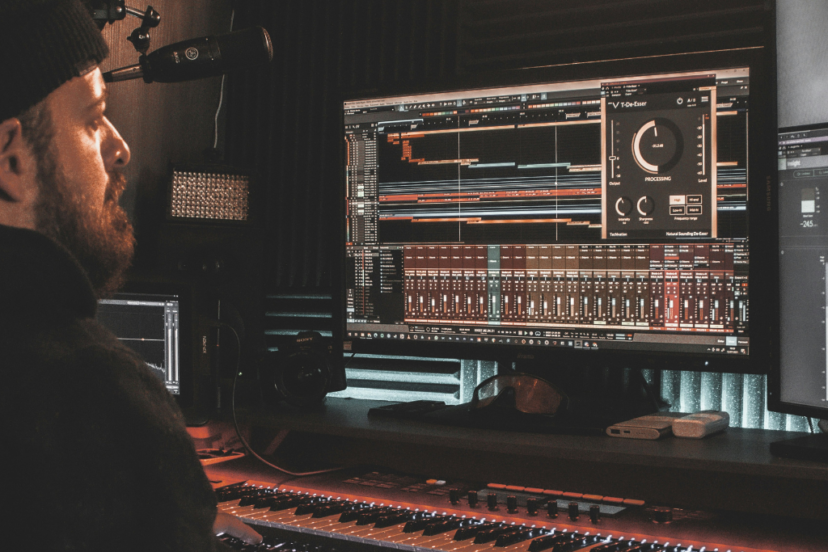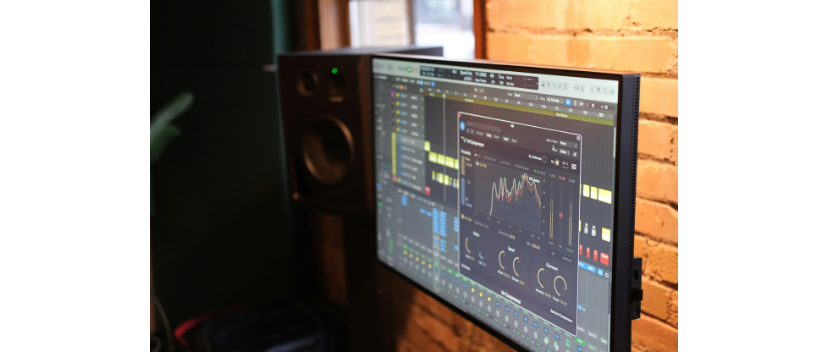Welcome to the exciting world of gain staging, where you can easily master your audio levels!…
Drum and Bass Mastering Essentials

Drum and bass mastering and mixing requires careful listening as well as top-of-the-line equipment and creative thought.
Changes to EQ can help bring out the best in drums by eliminating conflicting frequencies and adding harmonics; time stretching can make all the difference in performance.
1. Loudness in Drum and Bass Mastering
Drum and bass tracks typically start with a drum beat or bassline that plays for the entirety of a track, decorated by various FX such as reverb, delay or distortion to add color and life to each tune.
As drum beat and bass lines tend to exist at different frequencies in the spectrum, special consideration must be paid when pairing them – particularly at lower frequencies where bass harmonics often predominate. If two distinct notes clashed harmonically and resulted in an unnatural sounding mix. To mitigate this situation, subtle EQ tweaks were implemented in order to balance out frequencies and eliminate artifacts or distortion.
As well as making sure the beat and bass are loud enough without becoming distorted, limiting and stereo imaging techniques play an integral part in ensuring they stay that way. Stereo imaging provides a fuller soundscape while limiting prevents oversaturation or distortion from taking place in your mix.
Reference Tracks
Due to the nature of Drum and Bass being intended for both home playback and club systems, finding an optimum loudness level can be challenging. Referencing tracks are especially useful here – using professionally released, high quality Drum and Bass remixes as reference tracks will ensure that you don’t under- or overprocessing your track mix.
Drum and Bass is a highly rhythmic genre, and its success lies in its energy, momentum and sense of progression. Producers must therefore avoid over-processing their tracks with equalization (EQ), especially at higher frequencies where any harshness could easily ruin its overall quality of music. This is especially important now that streaming services have implemented loudness normalization, which limits dynamic range to prevent distortion while maintaining an appropriate listening level for listeners.
2. EQ in Drum and Bass Mastering
EQ is an invaluable tool in drum and bass production, used to sculpt sounds, regulate levels, and add character. Understanding different EQ techniques like high-pass filters, low-cutters and frequency boosts is critical in order to produce custom tones for every instrument in a track. Utilizing various frequencies can also help in the balancing process as it smoothes transients out while adding depth or punchy notes or reducing muddy sounding tracks.
Drum and Bass is a genre where the drums typically take up most of the space, which means they must be powerful enough to cut through dense mixes. Many DNB samples come from old breakbeats which may require additional treatment such as surgical EQ. Furthermore, processing such as distortion or saturation plugins may further add texture and give each track its own signature sound.
Equalization is especially crucial in drum and bass music, due to its dynamic nature. Setting each element individually ensures that when combined into a stereo master it sounds cohesive and balanced – for instance mixing the bass at a lower volume ensures the kick drum can still be heard over its sub frequency, as well as helping prevent clipping of tracks.
Accentuation
Utilizing equalization to shape the sound is another integral component of drum and bass production, as this tool can accentuate specific harmonics to add character and add dimension to a soundscape. A perfect example would be using reverb on a snare drum; adding some can help it sit better in the mix while creating depth via separate reverb channels that can be set at lower volumes to preserve crisp and clear audio production.
As when producing any music genre, drum and bass remains heavily based on human vocals for rhythm and melody. Vocal styles, effects and compression techniques help bring out the best in each song and provide listeners with an unforgettable musical experience.
3. Compression in Drum and Bass Mastering
Compression can help create a punchy bass sound by increasing compression levels. But you must apply this effect carefully to avoid creating pumping sound that could ruin your track. To minimize risk, ideally choose a compressor with slow attack/release times as this allows your drums and bass dynamics to build gradually without distortion, creating more transparent mixes overall.
Use multiple compression settings to enhance your mix. Test out different attack and release times until you find the optimal combination between compression and dynamic range; longer attack/release time create more subtle compression, while shorter release/attack times result in an aggressive tone.
Compression with Other Effects
Mastering drum and bass tracks requires meticulous care with regard to effects such as EQ and compression; in addition, mastering requires attention paid to effects like delay and reverb. These effects add depth and dimension to drum tracks while revealing details from vocals or other instruments in your mix. Experimentation with different delay/reverb settings can create unique sounds that will make your track stand out.
Mastering is a crucial component of music production and should ensure your songs sound consistent on all playback systems. Be sure to test your track on multiple systems to see how it performs – different speakers may have differing frequency response characteristics that affect its playback quality.
Mastering drum and bass tracks requires both creativity and technical ability, so use critical listening techniques when assessing your own mixes, take regular breaks from working, use reference tracks to give an indication of how your work should sound, use high-quality studio equipment and headphones to maximize audio production experience – with these tips, you’ll become an expert at drum and bass mixing and mastering to produce powerful beats that captivate audiences!
4. Time-Stretching in Drum and Bass Mastering
Time-stretching is an integral component of drum and bass mastering. This technique alters a loop or sample’s length without changing its pitch; you can use it to adjust to different tempos or create slow-motion effects; some producers use time-stretching to add punch and reduce transients in drum and bass production; however, too much stretching may destroy a track; therefore to avoid overprocessing, limit peak levels while using an effective mastering compressor.
Mastering drum and bass music requires mastery of multiple layers of instruments, requiring careful processing with EQ, compression, and other plugins to achieve balance between layers of instruments. A common misstep when trying to do this can result in distortion and muddiness if overprocessing occurs; sidechain compression techniques also offer clarity while maintaining transient information preservation.
Other Spatial Effects
Producers should master panning, stereo imaging and other spatial effects to craft an engaging audioscape. Panning can help distribute sounds based on frequency levels while stereo imaging widens the field of play. Spatial effects make your tracks feel larger than life by adding reverbs and delays – just be wary not to overuse these techniques as too many can muddy up the mix and obscure frequencies.

FAQs: Drum and Bass Mastering
- What is drum and bass mastering?
Drum and bass mastering is the final step in the music production process where the audio is fine-tuned, balanced, and optimized to ensure it sounds polished and professional across various playback systems. - Why is mastering important in drum and bass music?
Mastering enhances the overall sound quality, improves clarity, maximizes volume, and ensures consistency throughout the track. In drum and bass, where intricate rhythms and basslines are key, mastering helps in achieving the desired impact and energy. - What are the key elements of mastering drum and bass?
Key elements include optimizing dynamics, controlling frequencies, enhancing stereo imaging, ensuring proper loudness levels, and addressing any technical issues such as noise or distortion. - What are some common challenges in mastering drum and bass music?
Common challenges include balancing the powerful bass with the intricate drum patterns, preserving the dynamics while achieving sufficient loudness, and maintaining clarity in the mix, especially with complex arrangements. - How can I achieve a loud and powerful sound in drum and bass mastering without sacrificing dynamics?
Utilize techniques such as multiband compression, saturation, and careful EQ to control dynamics and enhance perceived loudness while preserving the punch and impact of the drums and bass. - What role does stereo imaging play in drum and bass mastering?
Stereo imaging is crucial for creating depth and width in the mix, allowing elements like drums, bass, and atmospheric effects to be spatially positioned for maximum impact and clarity. - How important is referencing in drum and bass mastering?
Referencing against professional tracks in the same genre is essential to ensure that your master achieves a comparable level of quality, balance, and energy. It helps maintain perspective and provides a benchmark for your own work. - What are some recommended tools and plugins for mastering drum and bass?
Commonly used tools include multiband compressors (e.g., FabFilter Pro-MB, Waves C6), EQs (e.g., FabFilter Pro-Q, iZotope Ozone EQ), stereo imagers (e.g., iZotope Imager), and limiters (e.g., FabFilter Pro-L, Waves L2). - Should I master my own drum and bass tracks or hire a professional?
It depends on your skill level, experience, and access to quality mastering tools. While mastering your own tracks is possible with the right knowledge and tools, hiring a professional mastering engineer can often yield superior results, especially for critical releases. - Any final tips for mastering drum and bass?
Experimentation is key; don’t be afraid to try new techniques and tools. Focus on achieving a balanced mix with clarity, punch, and depth while staying true to the energy and vibe of the genre. And always trust your ears throughout the process.



